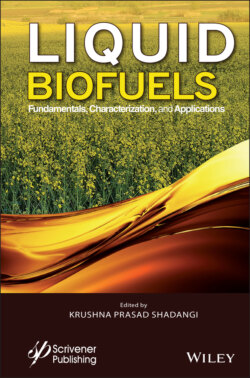Читать книгу Liquid Biofuels - Группа авторов - Страница 44
2.2 Principles of Ultrasound and Cavitation
ОглавлениеAs stated in the previous section, sonication or ultrasound irradiation is a relatively new technique of introducing energy into the reaction system. Ultrasound and its secondary effect cavitation make energies available on time and spatial scales that are not available from any other source. Oscillatory motion of liquid elements induced by passage of ultrasound waves generates intense micro-mixing in the system, while transient collapse of cavitation bubbles generates radicals that can induce/accelerate chemical reactions [27, 28]. Some basic principles of ultrasound and cavitation are briefly explained in this section.
Ultrasound essentially represents the sound waves with frequency higher than the upper limit of human hearing (i.e., between 20 kHz – 500 MHz). Cavitation is a secondary effect of ultrasound [29]. Cavitation occurs through the formation of tiny bubbles known as nucleation, followed by the growth of these bubbles driven by bulk pressure variation due to passage of ultrasound, and the final implosive transient collapse of the bubbles. The transient collapse of cavitation bubbles creates extreme temperatures and pressure on extremely narrow spatial and temporal scale resulting in high heating and cooling rates, which induces or favours numerous chemical reactions [30].
Apart from the ultrasound wave, the bulk pressure in a reaction system or especially flow reaction system can also vary due to changes in flow geometry. This phenomenon is known as hydrodynamic cavitation. In recent years, hydrodynamic cavitation has emerged as an alternative to acoustic cavitation [29].
Physical properties of the liquid medium, as well as physical aspects of the ultrasound wave, influence the nature and characteristics of the cavitation process, which in turn is manifested in terms of kinetics and yield of the process. Some of these physical parameters and the nature of their influences are listed below.
1 Temperature: With an increase in the bulk liquid temperature, the net intensity of cavitation decreases which occurs mostly because due to the rise in liquid temperature, the equilibrium vapor pressure of the system rises and results in a greater fraction of solvent vapor entering the bubble in the expansion cycle. This entrapped vapor in the bubble lowers the energy concentration during the transient collapse. Thus, the resulting temperature and pressure attained in the bubble at transient collapse is reduced, and correspondingly the production of radicals [29, 31].
2 Ultrasound wave frequency: The frequency of the ultrasound controls the nature of bubble dynamics and the intensity of the transient cavitation. With increase in ultrasound frequency, the duration of the rarefaction half cycle gets reduced and is not adequate for the growth of the bubbles. This results in the lesser intensity of bubble collapse. Generally, frequencies in the range of 20–30 kHz are usually preferred for effective sonochemical applications [29].
3 Acoustic power: The cavitation intensity shows maxima with respect to the acoustic power. Although the intensity of transient collapse of a single bubble reduces with increasing acoustic power, at very high power inputs, there is an abrupt and large formation of cavitation bubble clouds at the ultrasound source that obstructs the transmission of energy after certain point from the probe to the fluid [29, 30].
4 Physical properties of liquid medium: The most relevant physical properties of liquid in the context of cavitation phenomena are surface tension, viscosity, boiling point, and vapor pressure. The liquid medium with high surface tension, low viscosity, and low vapor pressure are favourable for getting high intensity cavitation phenomena [29].
The main physical effect of ultrasound and cavitation is the generation of intense micro-convection in the system. This microconvection is generated due to several distinct phenomena. These are (i) microstreaming, (ii) microturbulence, (iii) shock waves, and (iv) microjets [29, 32]. All these physical effects occur on extremely small spatial scales (nanoscale) and results in energy concentration. For a heterogeneous reaction system, these effects generate fine emulsion of the reaction mixture, and reduce the mass transfer barrier. Moreover, the microjets and shock waves generated in the reaction media due to cavitation also helps in uniform distribution of solid particles (catalyst) in the reaction system, which tend to settle down.
The chemical effect of cavitation, commonly known as the sonochemical effect, is essentially the generation of highly reactive free radicals such as ·O, ·OH, and HO2· during the transient collapse of the cavitation bubbles. The radicals are generated through the thermal dissociation of the vapor molecules entrapped in the cavitation bubbles due to the extreme temperature and pressure level reached inside the bubbles at the moment of transient collapse. The extent of free radicals production mainly depends on the physical properties of the medium and thus, liquids having lower viscosity with high vapor pressure will lead to the generation of relatively large number of free radicals [29–32]. For greater details, readers are advised to refer the previous literature [1, 24, 25, 29]. Several mathematical models have been developed in the past few decades, which can predict the intensity of cavitation phenomena.
